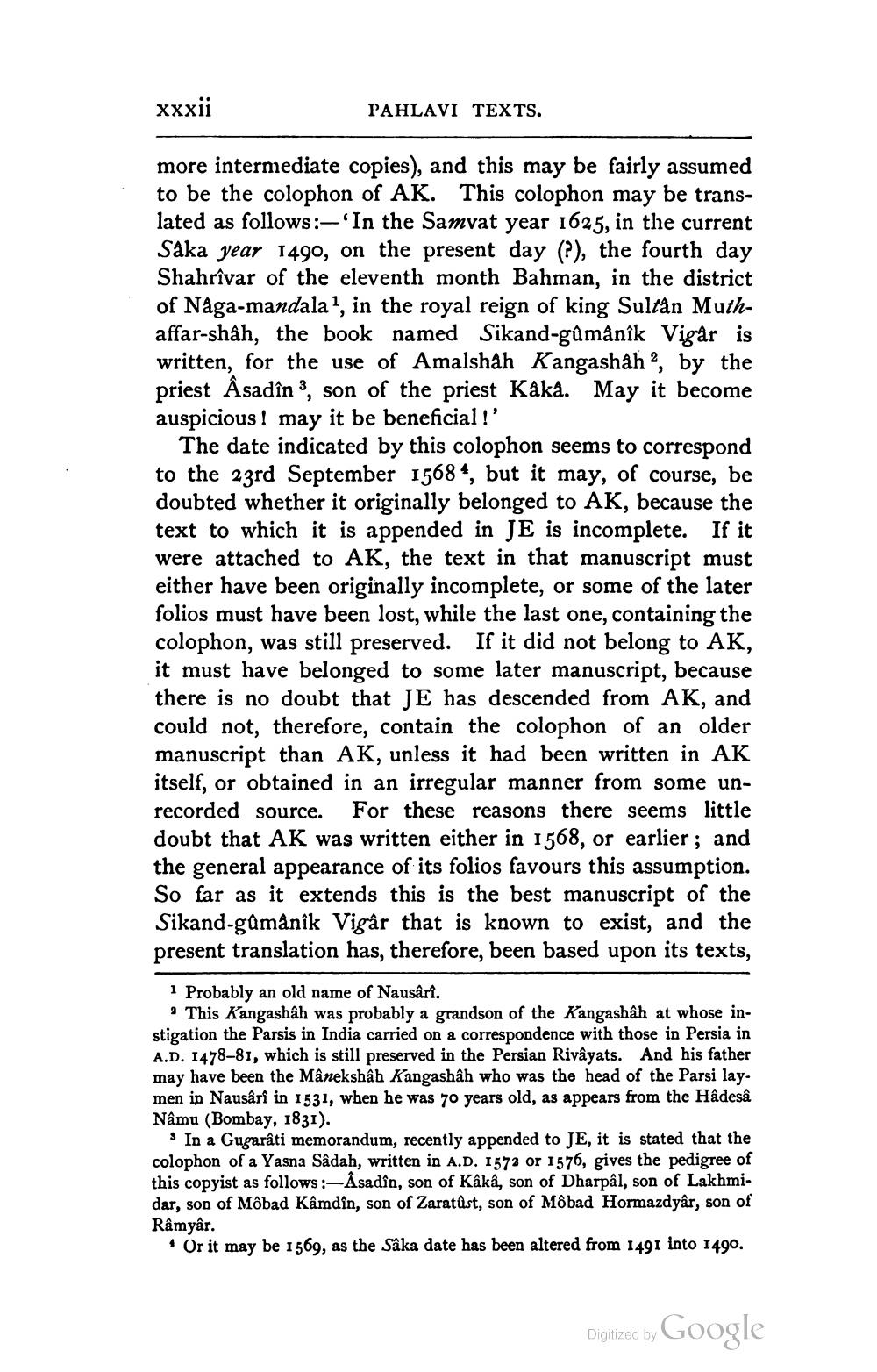________________
xxxii
PAHLAVI TEXTS.
more intermediate copies), and this may be fairly assumed to be the colophon of AK. This colophon may be translated as follows:-'In the Samvat year 1625, in the current Saka year 1490, on the present day (?), the fourth day Shahrîvar of the eleventh month Bahman, in the district of Någa-mandala', in the royal reign of king Sultan Muthaffar-shah, the book named Sikand-gûmânîk Vigår is written, for the use of Amalshah Kangashah”, by the priest Åsadîn 3, son of the priest Kaka. May it become auspicious! may it be beneficial !'
The date indicated by this colophon seems to correspond to the 23rd September 15684, but it may, of course, be doubted whether it originally belonged to AK, because the text to which it is appended in JE is incomplete. If it were attached to AK, the text in that manuscript must either have been originally incomplete, or some of the later folios must have been lost, while the last one, containing the colophon, was still preserved. If it did not belong to AK, it must have belonged to some later manuscript, because there is no doubt that JE has descended from AK, and could not, therefore, contain the colophon of an older manuscript than AK, unless it had been written in AK itself, or obtained in an irregular manner from some unrecorded source. For these reasons there seems little doubt that AK was written either in 1568, or earlier; and the general appearance of its folios favours this assumption. So far as it extends this is the best manuscript of the Sikand-gamånîk Vigâr that is known to exist, and the present translation has, therefore, been based upon its texts,
1 Probably an old name of Nausâri.
This Kangashâh was probably a grandson of the Kangashâh at whose instigation the Parsis in India carried on a correspondence with those in Persia in A.D. 1478-81, which is still preserved in the Persian Rivâyats. And his father may have been the Mânekshâb Kangashah who was the head of the Parsi lay. men in Nausâri in 1531, when he was 70 years old, as appears from the Hâdesa Namu (Bombay, 1831).
* In a Gugarâti memorandum, recently appended to JE, it is stated that the colophon of a Yasna Sâdah, written in A.D. 1572 or 1576, gives the pedigree of this copyist as follows:- Âsadîn, son of Kaka, son of Dharpal, son of Lakhmidar, son of Môbad Kâmdîn, son of Zaratast, son of Môbad Hormazdyâr, son of Râmyâr.
Or it may be 1569, as the Sâka date has been altered from 1491 into 1490.
Digitized by Google




